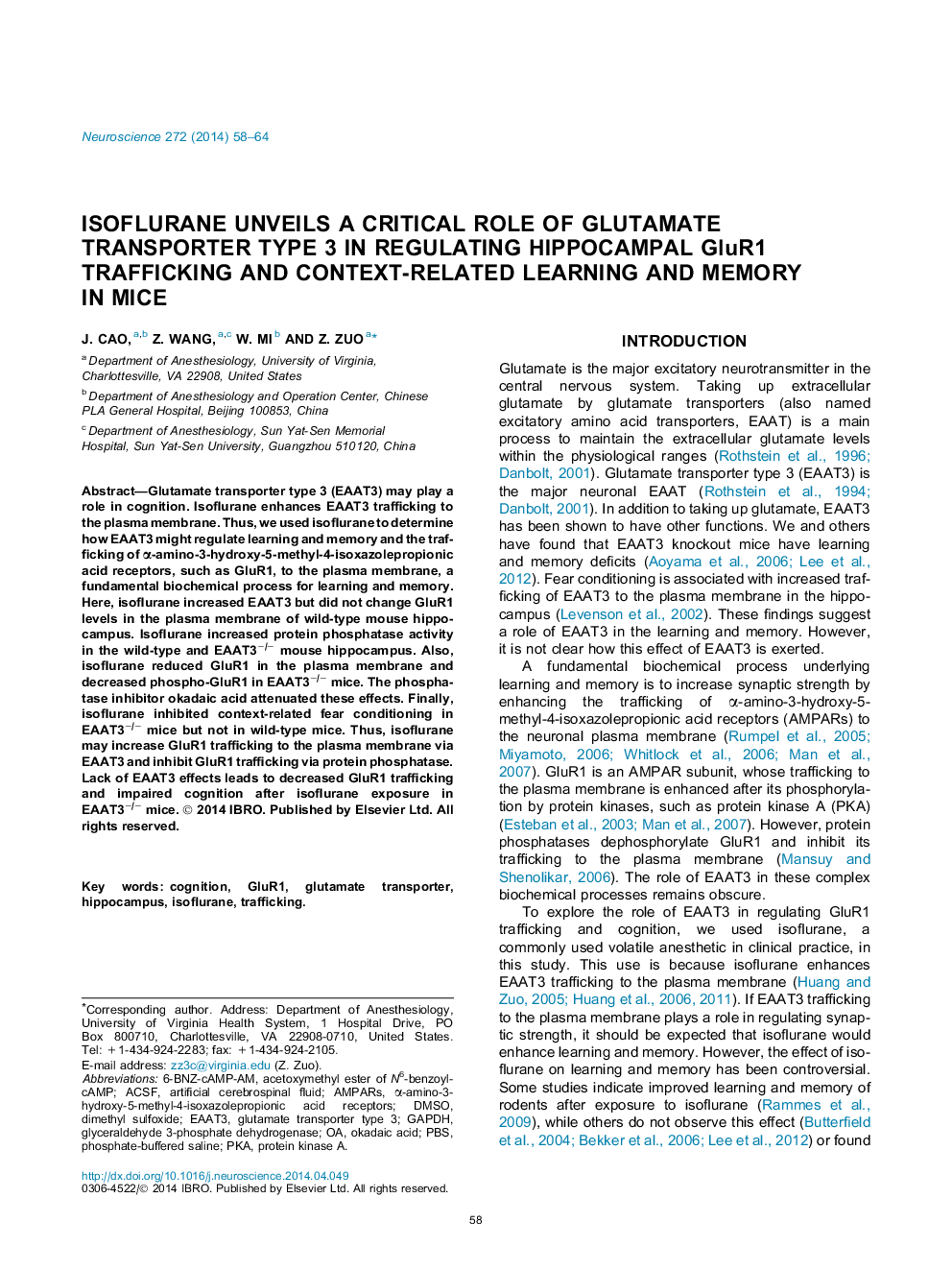| کد مقاله | کد نشریه | سال انتشار | مقاله انگلیسی | نسخه تمام متن |
|---|---|---|---|---|
| 4337561 | 1614804 | 2014 | 7 صفحه PDF | دانلود رایگان |

• Isoflurane can increase and decrease GluR1 trafficking to the plasma membrane.
• Isoflurane increased GluR1 trafficking to the plasma membrane maybe via EAAT3.
• Isoflurane reduces GluR1 trafficking in the hippocampus of the EAAT3−/− mice.
• Isoflurane decreases hippocampus-dependent cognition in the EAAT3−/− mice.
Glutamate transporter type 3 (EAAT3) may play a role in cognition. Isoflurane enhances EAAT3 trafficking to the plasma membrane. Thus, we used isoflurane to determine how EAAT3 might regulate learning and memory and the trafficking of α-amino-3-hydroxy-5-methyl-4-isoxazolepropionic acid receptors, such as GluR1, to the plasma membrane, a fundamental biochemical process for learning and memory. Here, isoflurane increased EAAT3 but did not change GluR1 levels in the plasma membrane of wild-type mouse hippocampus. Isoflurane increased protein phosphatase activity in the wild-type and EAAT3−/− mouse hippocampus. Also, isoflurane reduced GluR1 in the plasma membrane and decreased phospho-GluR1 in EAAT3−/− mice. The phosphatase inhibitor okadaic acid attenuated these effects. Finally, isoflurane inhibited context-related fear conditioning in EAAT3−/− mice but not in wild-type mice. Thus, isoflurane may increase GluR1 trafficking to the plasma membrane via EAAT3 and inhibit GluR1 trafficking via protein phosphatase. Lack of EAAT3 effects leads to decreased GluR1 trafficking and impaired cognition after isoflurane exposure in EAAT3−/− mice.
Journal: Neuroscience - Volume 272, 11 July 2014, Pages 58–64